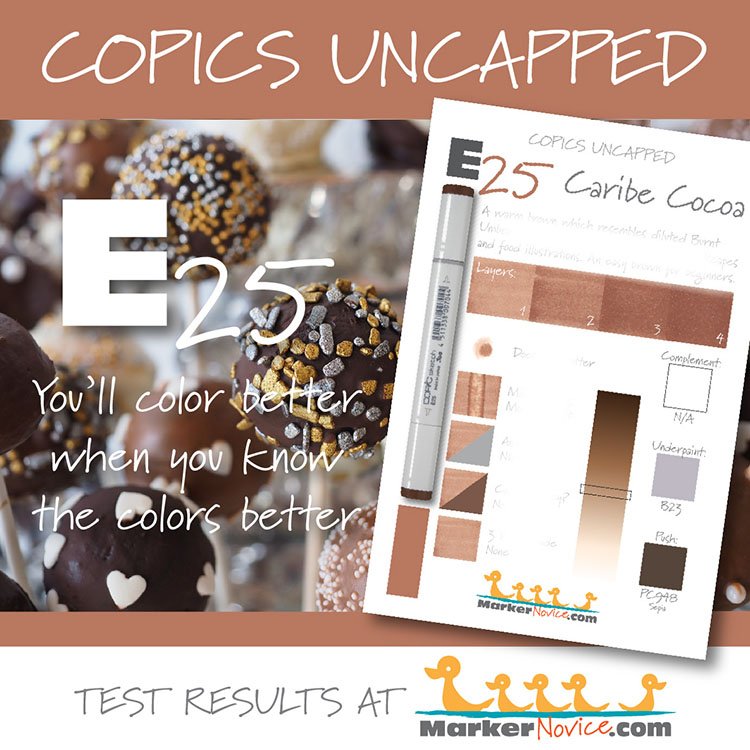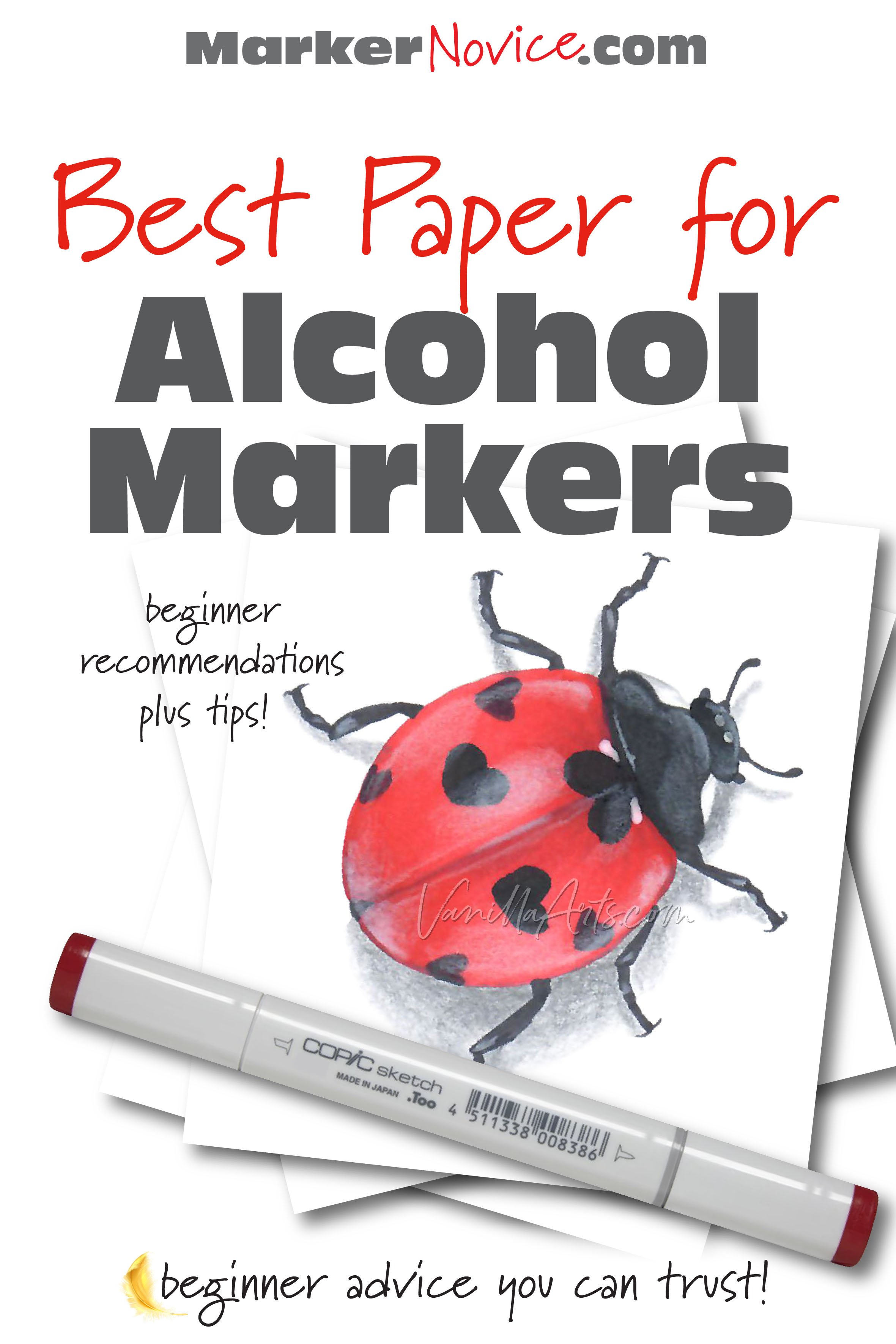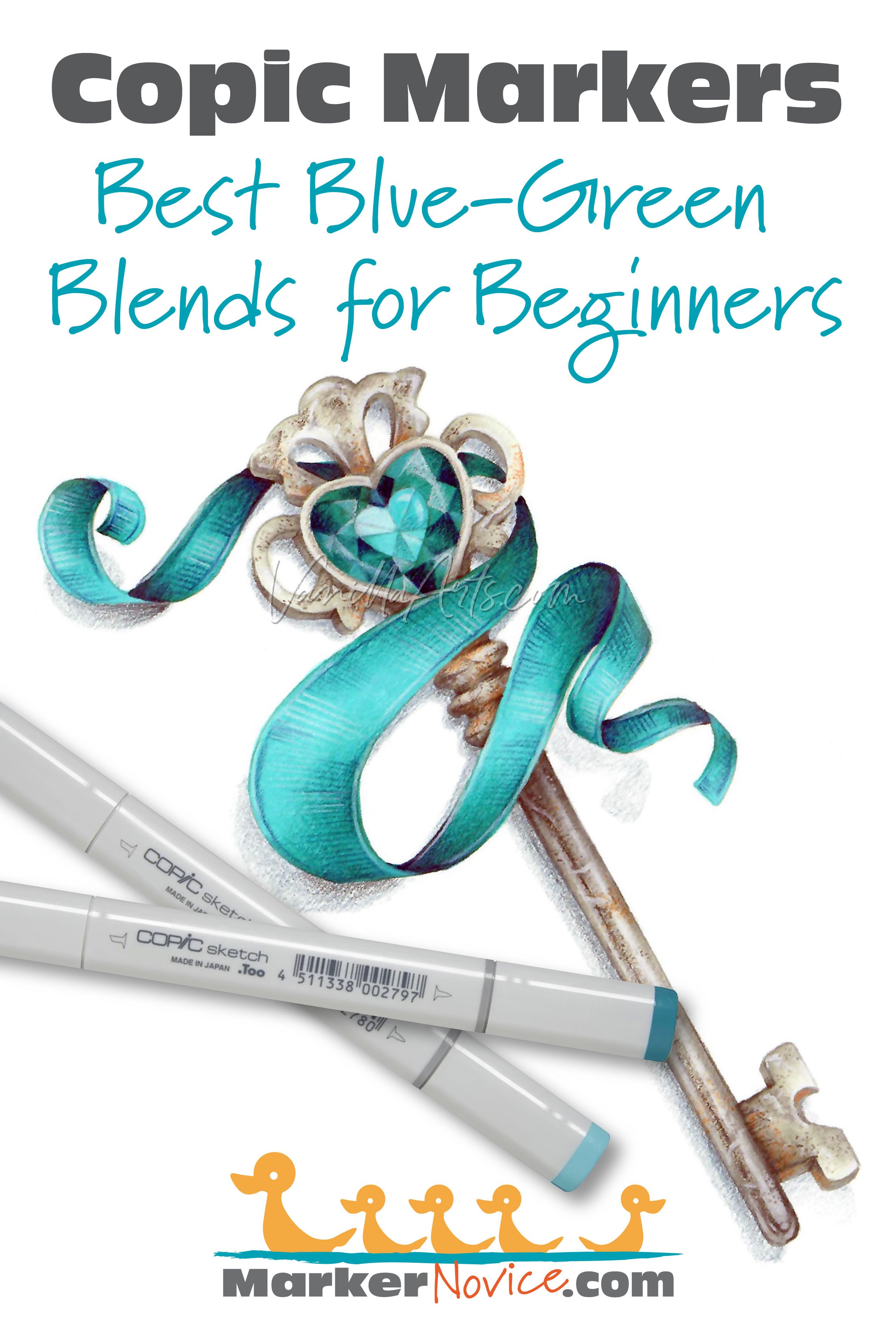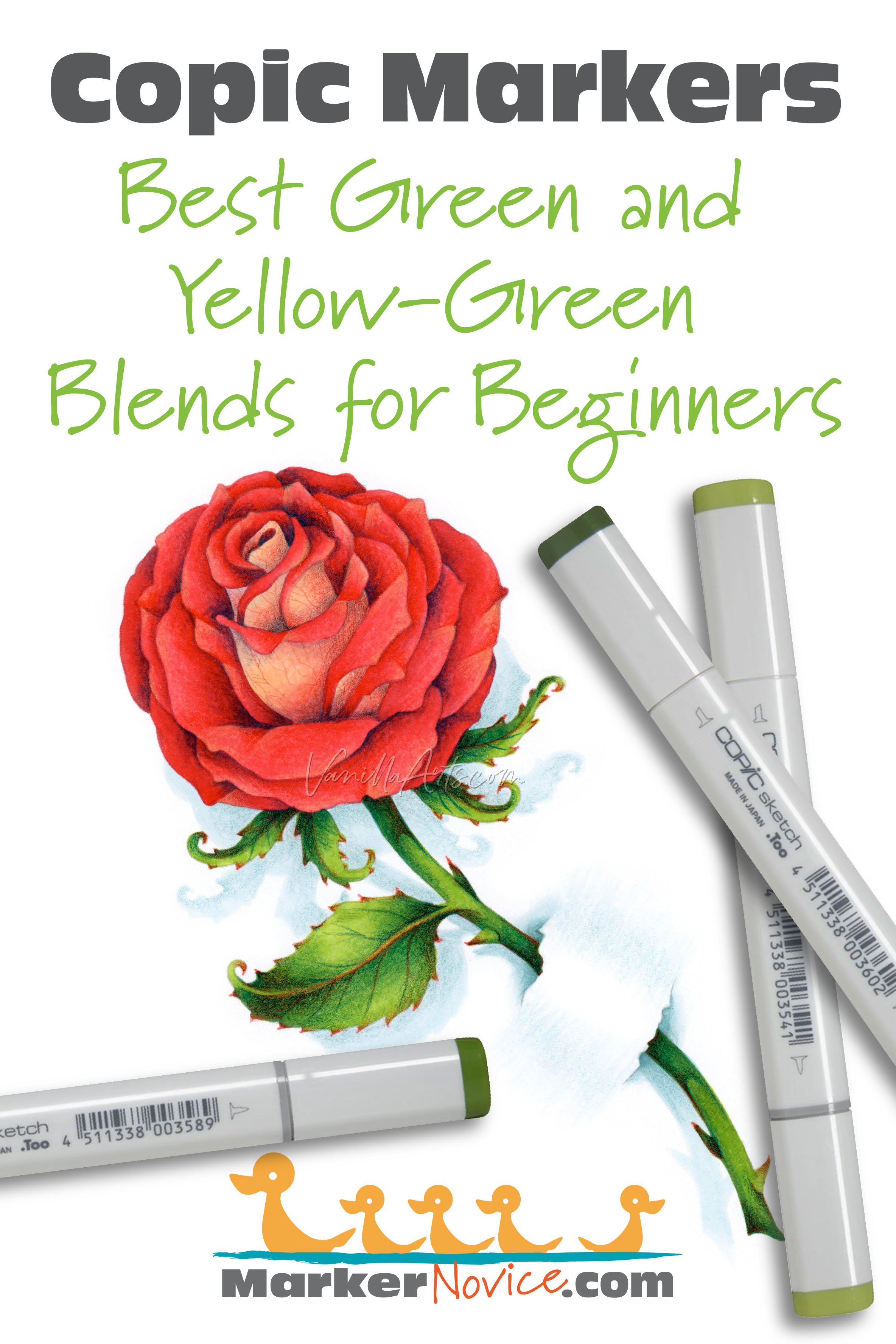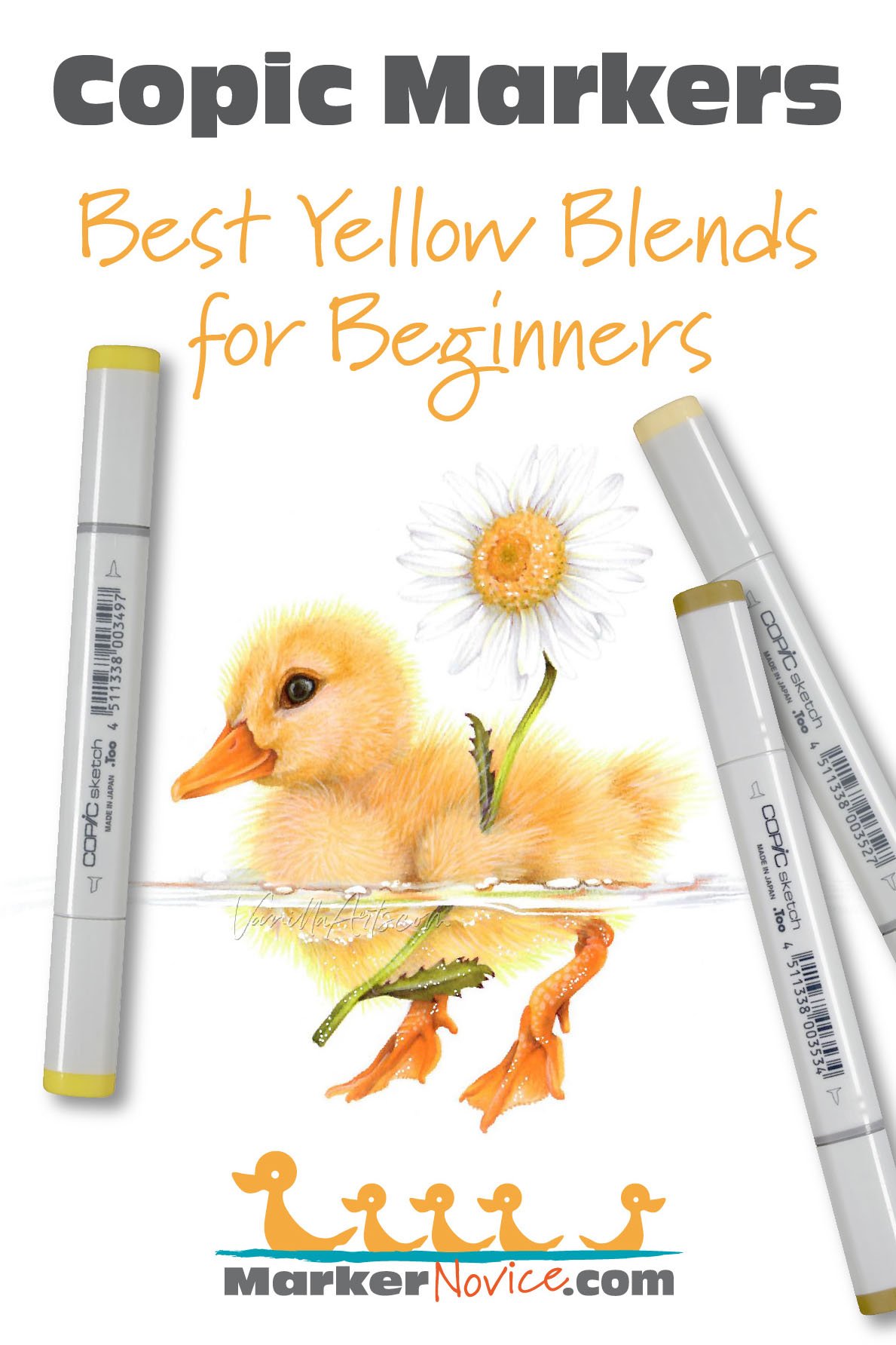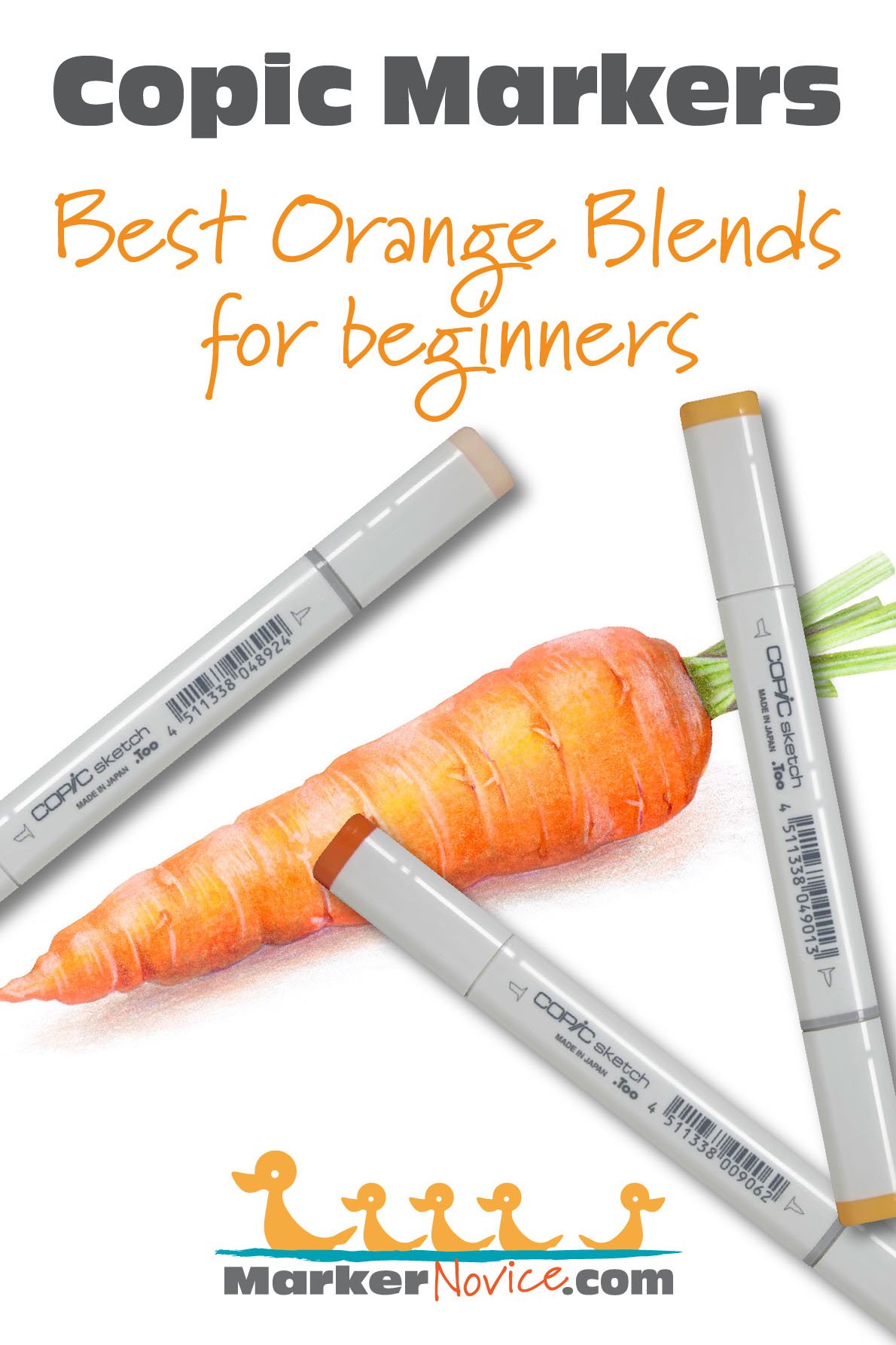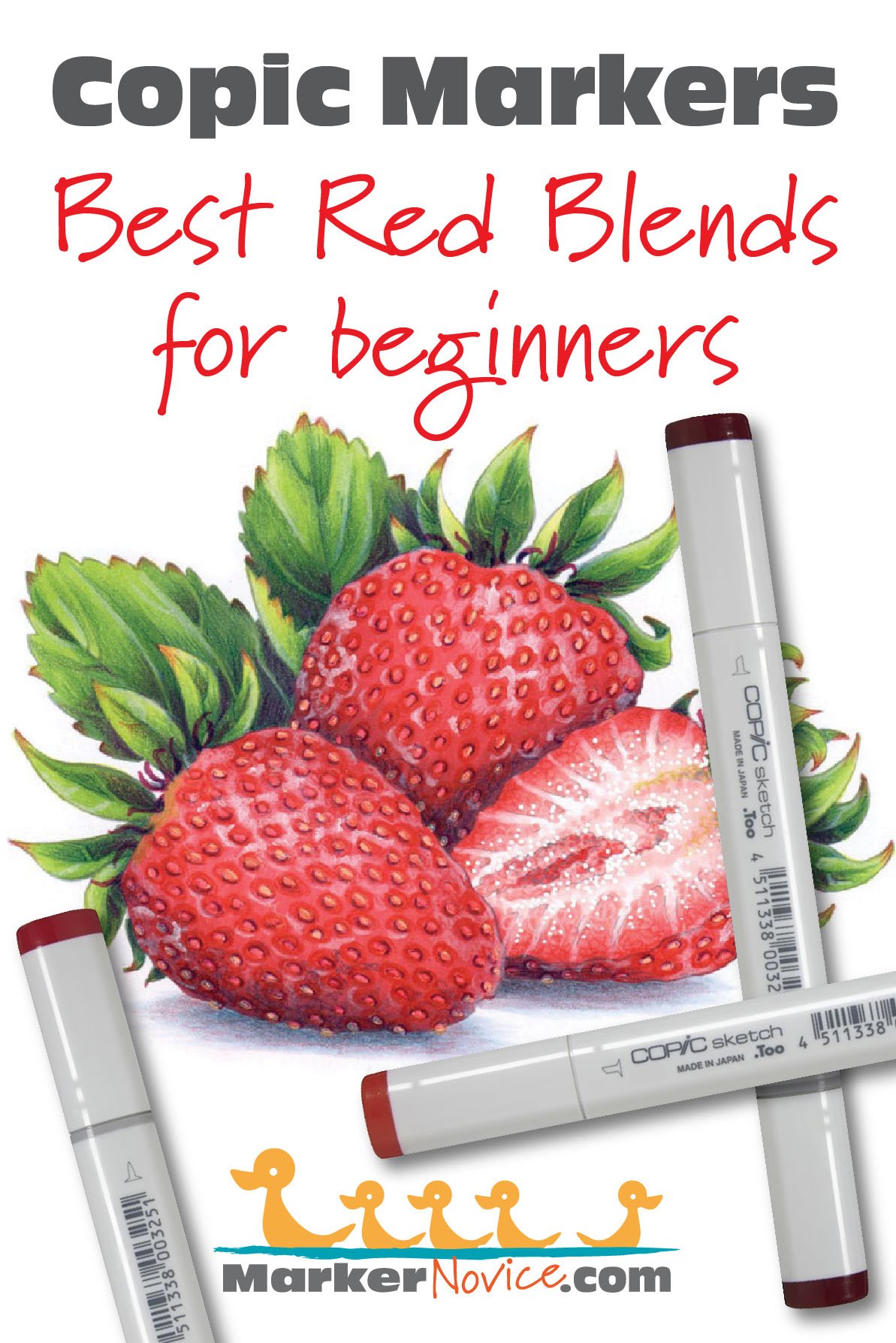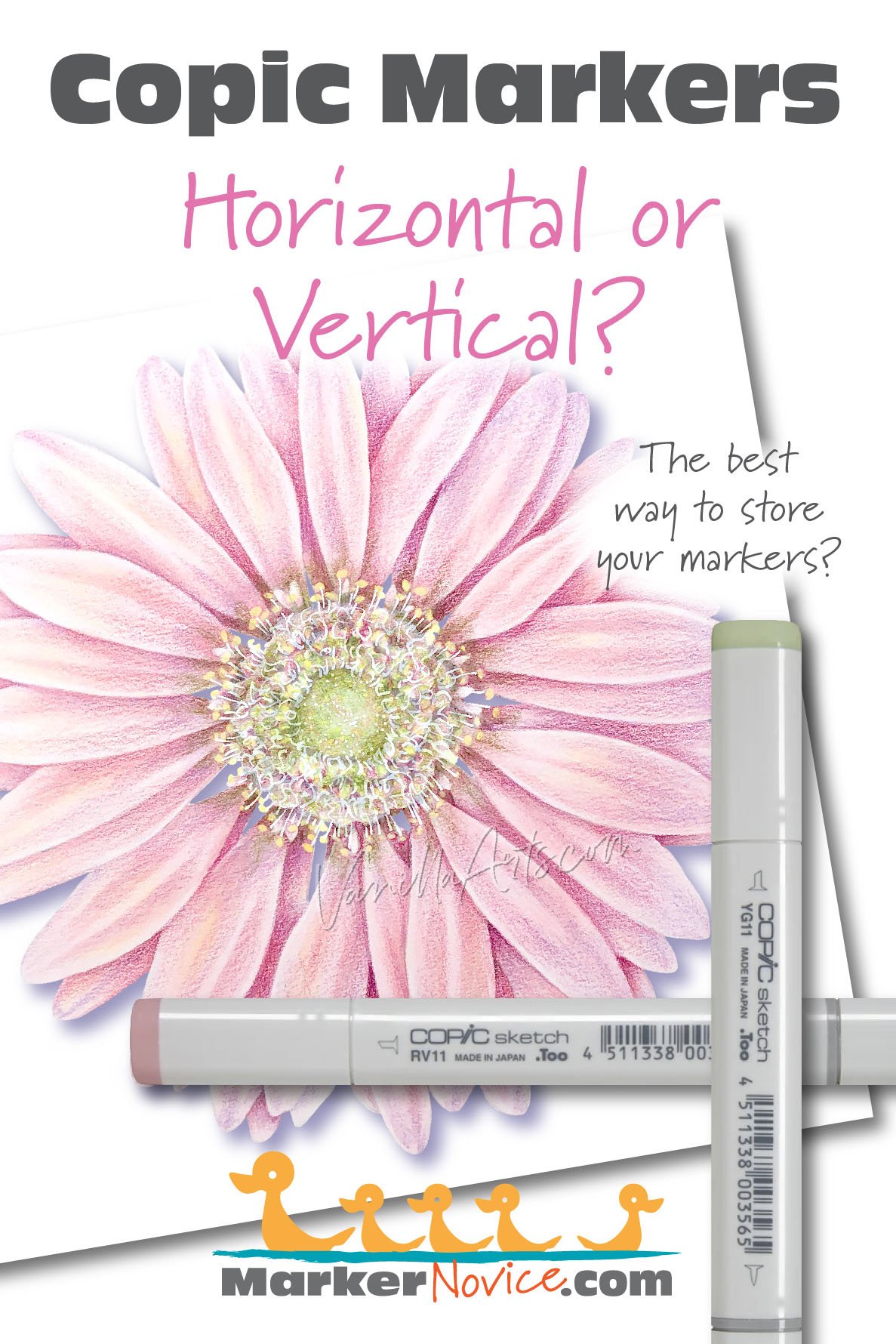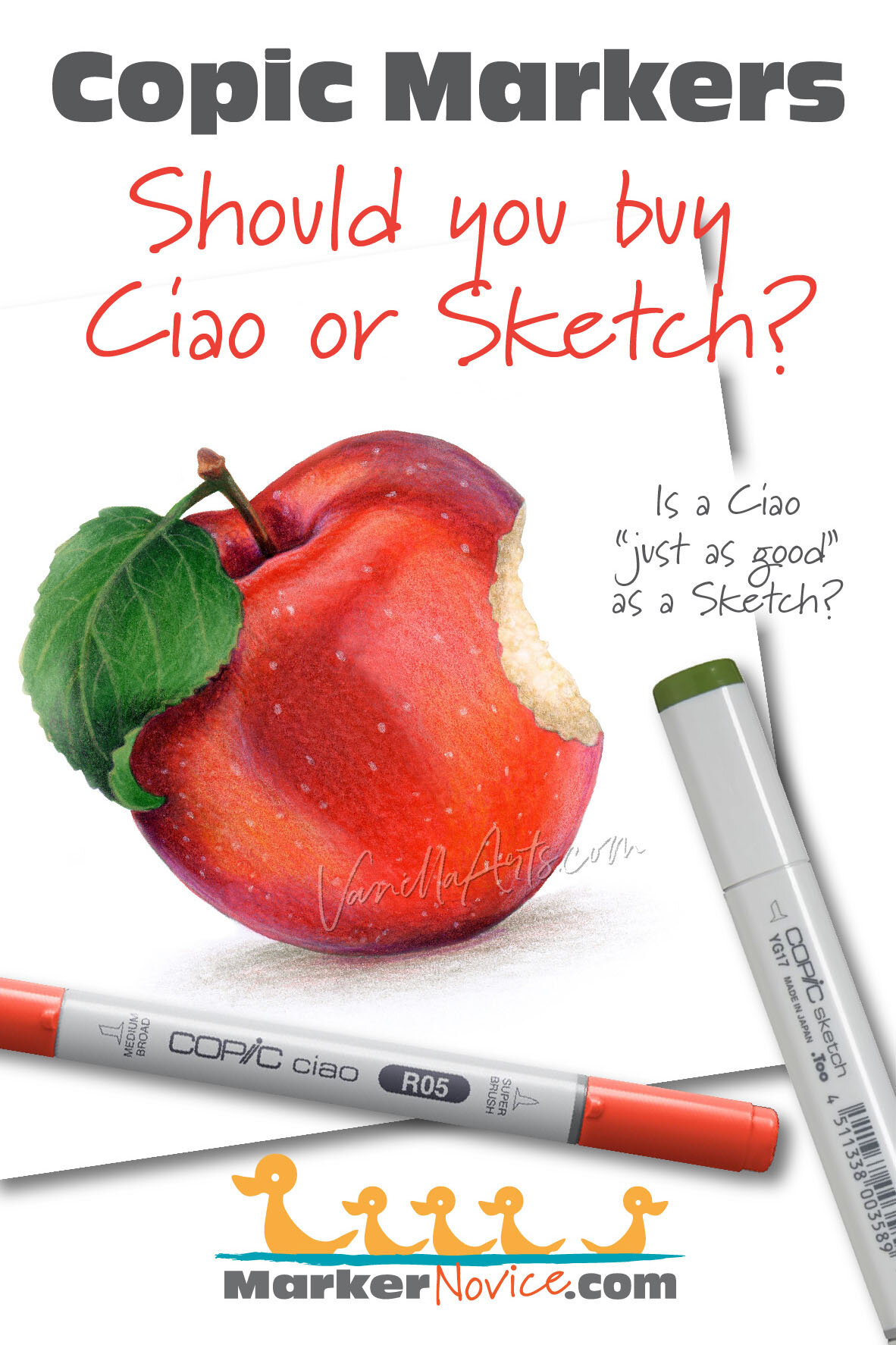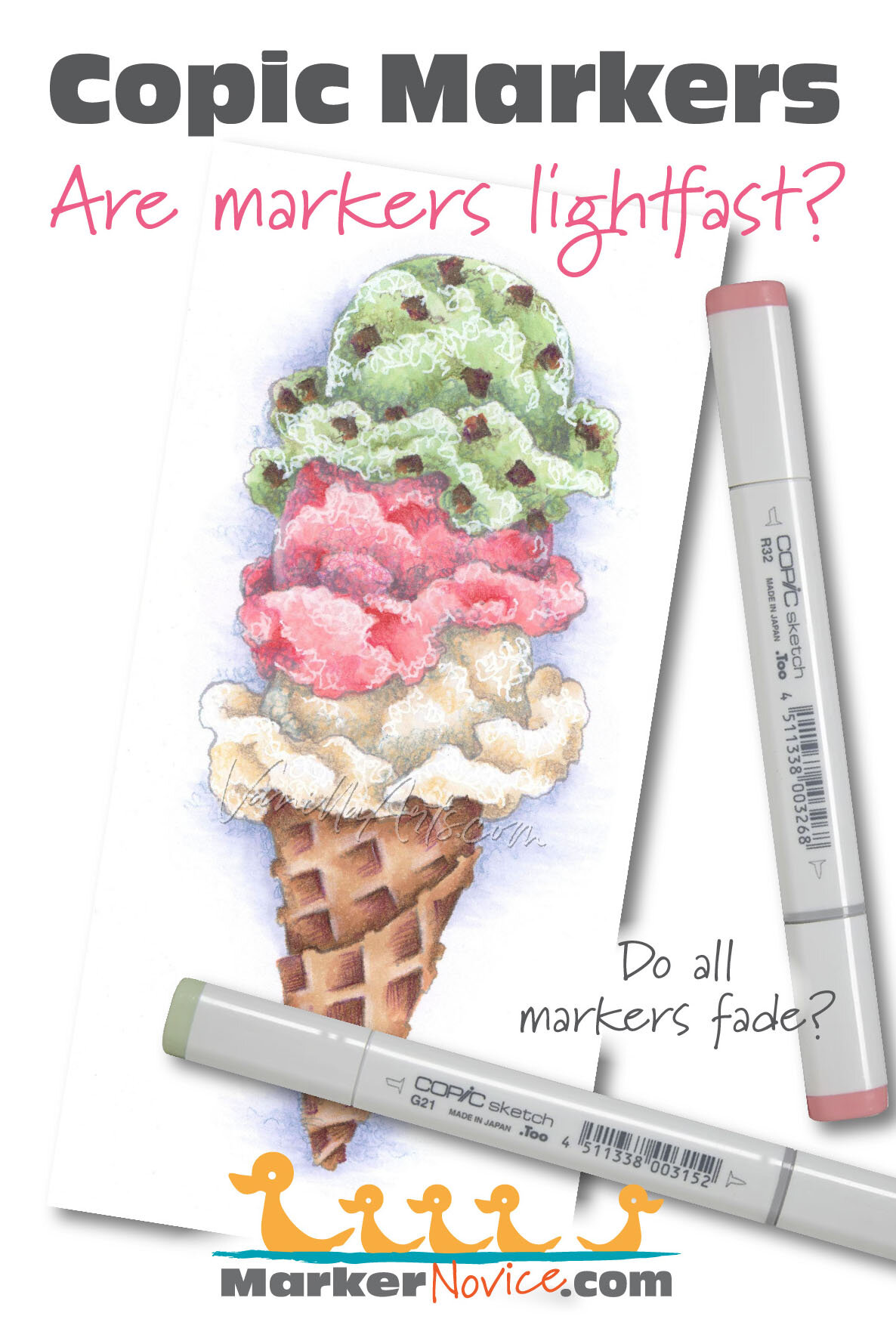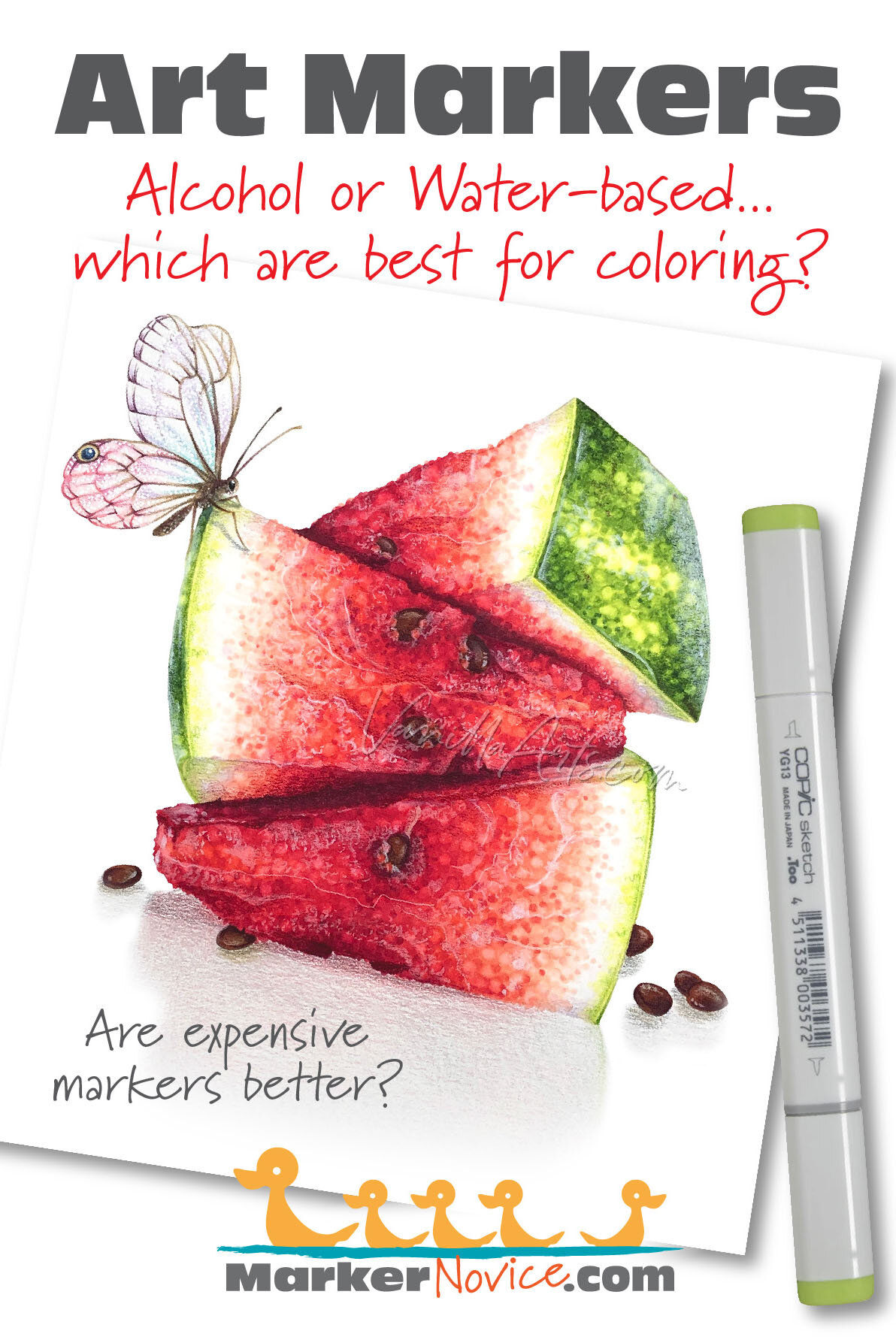Every Copic Marker has different characteristics based upon its unique ink formula.
Knowing how a color behaves will help you blend effectively and make art with confidence.
E25 Caribe Cocoa
Let’s take a closer look at this Copic Marker and its ink characteristics.
Temperature: A warm natural brown brown
Resemblance: one of the warmer Burnt Umber watercolors
Name: I’m assuming that “Caribe Cocoa” is meant to liken the color to that of cocoa powder made somewhere in the Caribbean. It’s not a name I’ve come across in art supplies. If I’m correct, Caribe Cocoa is an excellent name. Chocolate and cocoa are a unique brown which can be hard to capture without mixing paints. Copic E25 captures the color of milk chocolate perfectly.
Copic Styles: E25 is available in Sketch, Ciao, and Classic style Copic markers.
Actual Value: N6 (note: this is one of the few Copic markers that are darker than the cap indicates. Often, the ink is lighter than the last number indicator.)
All Copics are measured on a Neutral Gray value scale. The last number on the cap is supposed to indicate value but we’ve found discrepancies where the actual ink value is different than cap designation.
Cap Accuracy: No, the colored plastic on the Sketch cap is darker color as 4 layers of E25 ink. If you select this color expecting a dark chocolate brown, you will be disappointed.
Buildup: E25 reaches a maximum value at 4 layers. This color also tends to look blotchy and oily. For this reason, we are hesitant to recommend it to beginners as it requires a delicate touch.
Shattering: E25 does not shatter.
Chromatography testing shows this ink’s behavior when it comes in contact with #0 Colorless Blender (solvent). High shattering colors may leak unexpected color when you make corrections or attempt to blend with any color that has a high solvent to colorant ratio. Shattering is not bad, it’s just something to be aware of.
Staining: E25 stains the paper with a peachy warm color, the stained area matches E21 almost exactly. Staining markers do not blend as easily or as smoothly as non-staining Copics.
Lift: E25 can be lightened a bit but the paper will be permanently stained. The best you can hope for is to lighten mistakes enough to then camouflage them with another darker color.
See staining swatch. Sample was given 6 stripes of #0 Colorless Blender, drying between each stripe. Results indicate how much lifting you can expect.
Lightfast: E25 did not fade during the 3 week test period. AMAZING!
Samples were swatched on X-Press It Blending Card. 1 layer of ink was exposed to windowsill sunlight for 21 days. Approximately 10 hours of sun per day based on weather conditions. Note: we do not recommend displaying original Copic art under these conditions.
Natural Ink Family: E25 is at the dark of the E-Twenty family of brown Copics.
Family Members: E21, E23, E25, E27 E29
We include this information because many Copic users never think deeper than the letter groupings (R, BV, G, etc.). Every ink has its own temperature variations and underlying flavors. Understanding what an ink looks like in its different dilutions helps when creating your own blending combinations.
Complement: Brown is not a hue and therefore, not on the color wheel. It has no complement.
Underpaint: We suggest BV23
This is simply one suggestion. Many possible colors exist. Test to find a color that pleases you.
Pushing Pencil: Prismacolor PC948 Sepia is a safe choice. PC931 Dark Purple is an option for the daring and brave.
VanillaArts.com (our sister site) teaches a Push & Pull technique for dimensional coloring. This is simply one suggestion. Many possible colors exist. Test to find a color that pleases you.
Looking for beautiful color palettes?
We absolutely love The Color Catalog 1 & 2 from Sarah Renae Clark. It puts hundreds of Copic friendly color palettes at your fingertips.
(note: affiliate link)







